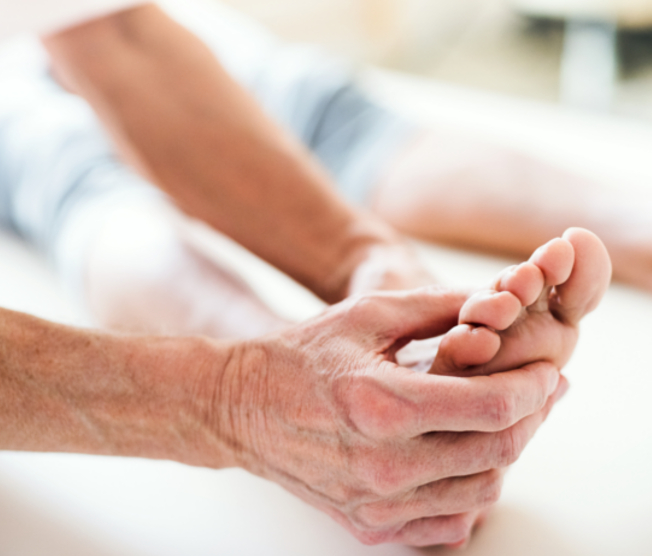 For most of our lives, foot care is considered a cosmetic issue. Yet as we get older, signs of certain health concerns can emerge through a change in toenail quality. Podiatric issues may have a more pervasive and debilitating effect, influencing a person’s mobility.
For most of our lives, foot care is considered a cosmetic issue. Yet as we get older, signs of certain health concerns can emerge through a change in toenail quality. Podiatric issues may have a more pervasive and debilitating effect, influencing a person’s mobility.
For yourself or a loved one, here’s what you should know about keeping feet and toenails healthy with age.
How Nails Change with Age
As you grow older, your toenails may start to thicken and become harder or take longer to grow. You might also notice the composition appears more brittle, yellow or less translucent and the former shine may have dulled.
Beyond the aesthetic factors, age can bring on multiple podiatric changes in older adults:
- People aged 65 and older are at higher risk for fungal infections of the nailbed, which may be exacerbated by wearing socks and shoes more often to lessen fall risks.
- Similar to other parts of your body, the skin on your feet and toes begins to thin and lose elasticity. This change increases your risk for foot infections and blisters.
- Foot care becomes a challenge for older adults due to decreased mobility, flexibility and vision. You might not see an infection or blister forming or you may be unable to bend over to clip your toenails.
- If you have diabetes, foot care needs to be prioritized. This condition can reduce sensation in the feet, possibly resulting in an unnoticed scratch that becomes infected. In terms of overall health, controlling blood sugar levels can reduce your risk for foot amputation.
Foot Care for Older Adults
Considering the points described above, older adults and their caregivers are advised to take the following precautions.
See a Podiatrist
Routine appointments with a podiatrist have a two-fold benefit: Catching infections before they become more serious and maintaining the feet and toenails to reduce infection and injury risks. Visits may entail:
- Properly trimming and shaping your toenails to reduce cuts and potential infections, as well as removing any ingrown toenails.
- Examining your feet, skin quality, circulation and pulse in relation to peripheral artery disease, venous insufficiency, diabetes and other health conditions.
At West Hartford Health & Rehabilitation Center, we have a podiatry specialist who can see patients at our facility!
Develop New Habits
Foot care and toenail health should be emphasized in the daily routine of all seniors:
- Give your feet a chance to breathe. Schedule a time of day to rest your feet or put them up before bed.
- Use nail polish sparingly to consistently check the quality of your nails.
- Keep your feet clean to prevent or lessen the spread of fungal and bacterial infections. Be sure to clean your feet in the shower or bath, wipe your feet down with soap and water each night and schedule the occasional foot soak.
- Get your nails trimmed regularly. Along with reducing risks for cuts and scratches that could turn into infections, trims lessen the amount of germs, skin cells and dirt settling beneath your nails. At home, consider trimming your nails after a bath and file them immediately after. Also be on the lookout for ingrown nails or hangnails.
- Moisturize your feet to reduce cracking or flaking skin, improve hydration and lessen your risk of developing blisters and sores.
- Look for signs of infection, including blistered skin, sores, cracked skin and nail thickening or discoloration.
- Wear footwear that provides traction. You may also need a different size with age. Shoes that are too narrow or wide can increase risk for blisters and affect mobility.
- Don’t forget about proper nutrition. As dry and brittle nails can indicate a deficiency, take calcium supplements, vitamins A, B and C, and include more lean proteins, whole grains, fruits and vegetables in your diet.
For additional guidance on foot and toenail care for yourself or an aging loved one, contact the medical professionals at West Hartford Health & Rehabilitation Center today.
« How Seniors Can Avoid Medication Interactions

